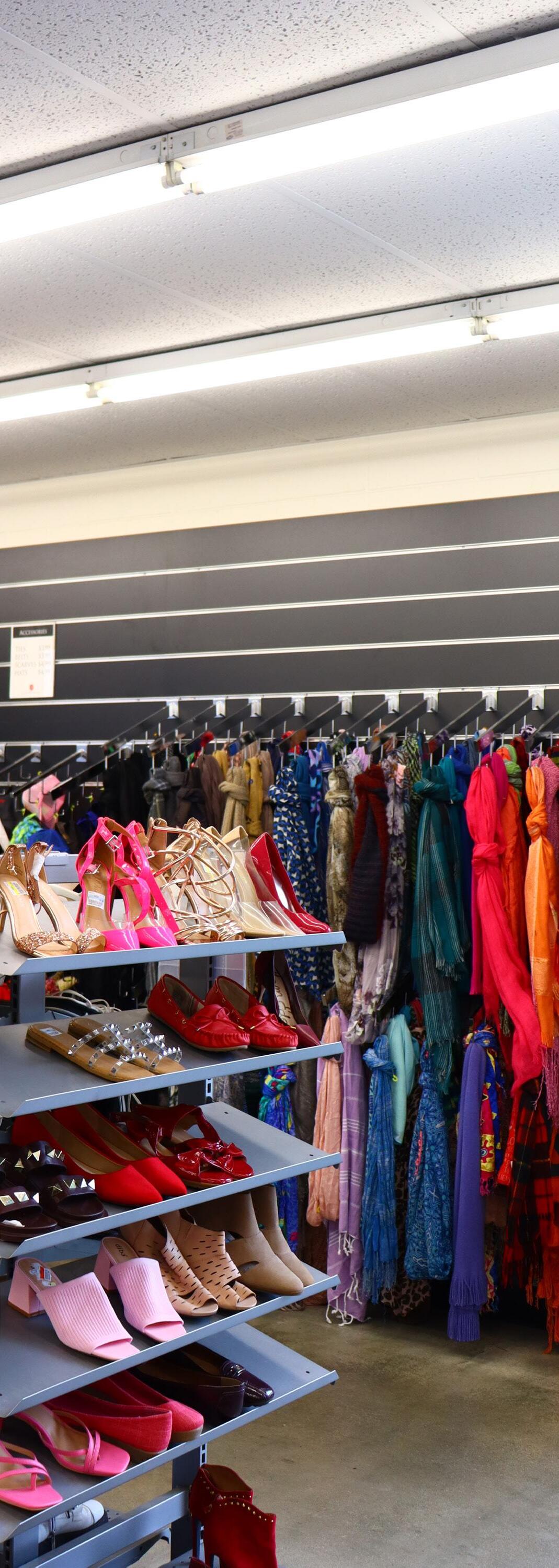
3 minute read
THRIFTING’S RISING PRICE TAG
By Amaya Reynolds Staff Writer
Nice days call for spending money, but not too much. When manifesting a new wardrobe, $20 and a cute thrift store equals happiness.
New, but used. Cute, but different and saving your coin! But do not get too excited, things are changing, and $20 will not get you as far as it used to when buying recycled clothes. Prices for resale clothes are rising. Are resellers the problem? Is it potentially a TikTok influence? Or is the economy just too expensive when the seller needs a big profit to stay afloat?
Thrift stores consist of a variety of donations from new to used items such as antiques, a t-shirt someone bought and never wore, or a used accessory needing a new home. Many people donate to thrift stores just to get rid of “something old.”
Thrifting and sustainability go hand in hand. According to an article by TruEarth, thrifting prevents textile waste production and helps alleviate negative environmental impacts.
“Thrifting reduces the demand for new goods,” environmental studies and member of the Environmental Resource Center at San José University, Simon Maranguis said. “When you thrift you’re buying pre-owned items, so there’s no demand from the consumer in return. And reducing demands for new goods helps preserve natural resources.”
Many students and young adults thrift to save their bucks, because everybody deserves to feel at their best with new things. Cheyenne Robinson, a 23-year-old pharmacy clerk in the San Francisco Bay Area, asked the burning question, “Why does it feel like I’m paying full price for recycled clothing?”
Nathalia Buelna, an SJSU alum with a degree in hospitality event management, said that the prices at many thrift stores have definitely become higher as she frequented San José thrift stores when she was a resident.
“My main focus when going to a thrift store is to find something unique that catches my eye, an item that I wouldn’t find at H&M, Zara, or Forever 21,” Buelna said.
Buelna also said that when she is shopping at the local mall at the mainstream stores she is not focused on the price tag like she would at a thrift store.
When buying new clothes the mindset of many is “it is what it is”, but buying an old man’s jacket from the ‘70s at a hefty price is absurd, Robinson said.
Sophia Marin, an associate at Black & Brown, a local thrift/consignment store that has serviced the San José community for over 19 years, laid out the causes of high, but still affordable prices.
“The number one reason prices have gone up is the obvious, inflation,” Marin said. “We’ve got to be able to pay for the rent of the building, so people have somewhere to shop.”
According to a 2023 Investopedia article, inflation has been at its highest since 2021, causing prices to rise.
Marin also said that many “thrift stores” are not clear about whether or not they are consignment. “When buying consignment a lot goes into the process before the clothes are shelved and priced,” Marin said. “The owner has to carefully inspect the garments, determine the longevity of the item, and go on to buy the item and resell at another price.”
Marin said there is a cycle of buyer and consumer that never ends. The big monster that is hiking up the prices is social media influencers. Goodwill stores now have online stores, so all the “good finds” are going straight online because they know they will get a bang for their buck.
“The culture of thrifting coming back is more of a good thing because it brings a lot of foot traffic to the store,” Marin said when referring to thrifting culture coming back.
Pondering the rising costs and blurred distinction between thrift, consignment and sustainability, there are a couple of reasons why the prices have increased. There is the influence of social media, such as TikTok and Instagram, and the inflation of the economy.
“Although there aren’t any specific technologies that come to mind that enhance sustainability and thrifting, I will say that social media and other online platforms have improved the reach of secondhand markets and thrift stores and have allowed them to reach a much wider audience,” Maranguis said.
In a world grappling with the repercussions of overconsumption and environmental degradation, every purchase holds the potential to either contribute to waste or promote sustainability. Whether it is at a higher or lower price, thrifting will always be a stepping stone to helping the environment and improving daily life.
“Keeping the pricing affordable allows more people of all economic backgrounds to access these products at thrift stores or secondhand markets,” Maranguis said.










